Day I: Arrival to Tbilisi
Arrival at the airport and transfer to the hotel
Overnight in at the hotel in Tbilisi
Day 2: Guided tour in Tbilisi
Breakfast at the hotel, Sightseeing in Tbilisi, the capital of Georgia Founded in the 5th century by the monarch of Georgia’s ancient precursor Kingdom of Iberia
Metekhi church – a church and a fort which served also as a king’s residence; dates back to the 12th century and literally means “the area around the palace”
Narikala Fortress – an ancient fortress overlooking Tbilisi, The fortress consists of two walled sections on a steep hill between the sulphur baths and the botanical gardens of Tbilisi. On the lower court there is the recently restored St Nicholas church
The sulfur bath – based mostly in the Abanotubani region of Tbilisi, has been a tradition in Tbilisi going back hundreds of years. The city’s abundance of sulfur springs have been harnessed and used to naturally heat the pools which bathers use to unwind, relax, and gossip about local news.
The bridge which stretches 150 metres over the River Mtkvari was designed by the Italian architect Michele De Lucchi ordered by the City Hall of Tbilisi to create a contemporary design feature connecting Old Tbilisi with the new district.
The Anchiskhati Basilica of St Mary is the oldest surviving church in Tbilisi dating from the sixth century
The Sioni Cathedral of the Dormition bears the name of Mount Zion at Jerusalem. To the left of the altar is the venerated Grapevine cross which, according to tradition, was forged by Saint Nino, a Cappadocian woman who preached
Christianity in the Caucasus in the early 4th century
Rustaveli Avenue – often considered the main thoroughfare of Tbilisi due to a large number of governmental, public, cultural, and business buildings that are located along or near the avenue.
National Museum – preserves and exhibits a unique collection of natural and human history. The collections of the National Museum cover the history of the country, starting from animal remains dated back to 40 million years
Folclore or dance show (Optional)
Overnight at the hotel in Tbilisi
Day 3: Guided tour to Uplistsikhe, Mtskheta + degustation of Georgian vines, Georgian dishes cooking master class
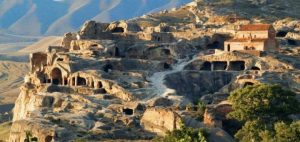
Breakfast at the hotel and departure to Mtkheta, ancient capital of Georgia
Uplistsikhe – Located in Eastern Georgia, Uplistsikhe (literally “Lord’s Fortress“) is an abandoned rock-hewn town, which once have played an important role in Georgian history. The place was founded in the late Bronze Age, around 1000 BC, and continued to be inhabited until 13th century AD. Between the 6th century BC and the 11st century AD, Uplistsikhe was one of the most important political and religious centers of pre-Christian Kartli – one of the predecessors of the Georgian state
Mtkheta- Located about 20 km north of Tbilisi at the confluence of the Aragvi river. Became a UNESCO World Heritage Site in 1994, due to its historical significance and several cultural monuments; As the birthplace and one of the most vibrant centers of Christianity in Georgia, Mtskheta was declared as the “Holy City” by the Georgian Orthodox Church.
During the trip to Mtkheta you will visit Svetitskhoveli catedral -, known as the burial site of Christ’s mantle, has long been the principal Georgian church and remains one of the most venerated places of worship to this day. Also, Jvari monastery standing on the rocky mountain top at the confluence of the Mtkvari and Aragvi rivers, overlooking the town of Mtskheta
Back to Tbilisi, overnight at the hotel
Day 4: Breakfast in the hotel and departure to Dmanisi
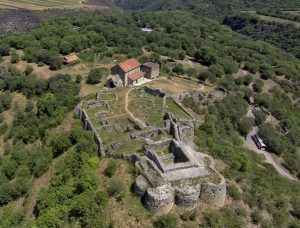
Dmanisi is located about 85 km south-west of Tbilisi buried below the ruins of the medieval town of Dmanisi, in the Mashavera River Valley. Recent excavations of Dmanisi have revealed an extraordinary record of the earliest hominid dispersal beyond Africa. Several hominid individuals, along with abundant well-preserved remains of fossil animals and stone artifacts have been found. In 2003-04 field season another new hominid mandible, with fascinating pathologies having implications for the evolution of human disease and also social behaviour has been discovered. This is the richest and most complete collection of indisputable early Homo remains outside of Africa with good stratigraphic context, now well dated to about 1.75 million years ago.
Dmanisi discoveries are most ancient in whole Eurasia and are dated to 1.75 million years ago. There is the great potential for further finds as well.
Back to Hotel in Tbilisi
Day 5
Breakfast at the hotel departure to Djavakheti
Khertvisi fortress is one of the oldest fortresses in Georgia and was functional throughout the Georgian feudal period. The fortress was first build in the 2nd century BC. As the legend says, Khertvisi was destroyed by Alexander the Great.
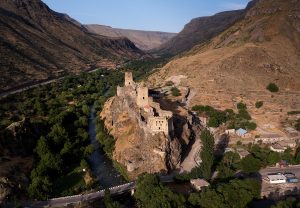
Vardzia: 12th-13th cc. rock-cut monastery is significant in many respects: unique natural conditions contributing to the specific microclimate and landscape, historical context and diversity of cultural heritage.
Rock-cut complexes forms integrate part of the landscape. Rock-cut structures of the nominated site have preserved interiors and planning type, which have not reached us in the samples of built architecture. This is especially vivid in the samples of vernacular architecture, monk cells, subsidiary and public structures. Rock-cut monuments preserved in Vardzia-Khertvisi gorge comprise quite vast chronological limits – from the 8th-9th cc. up to 15th-16th cc. They make to possible to trace development of the type from simple caves up to grand, multi-tiered complexes.
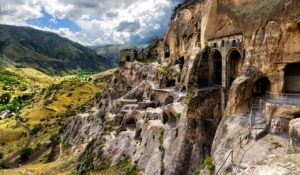
Tmogvi– The fortress was an important fortress-town of Georgia. It stands on a high rocky mountain on the left bank of the Mtkvari river, in Javakheti. In historical sources, The fortress is first mentioned in the 10th century. The upper and the lower parts of the fortress were linked with the secret tunnels. There is the Efremi church on the massive rock, in the West side of the valley. The 13th century wall paintings are still preserved in the ruins of the other church. There are remains of an abandoned villages, ruins of the palaces and the piers of the bridges preserved on the both banks of the Mtkvari river.
Overnight at the family hotel in Javakheti
Day 6: Breakfast at the hotel and departure back to Tbilisi
Lunch in Borjomi and degustation of the mineral water at the spring
Check in Hotel in Tbilisi, Free time


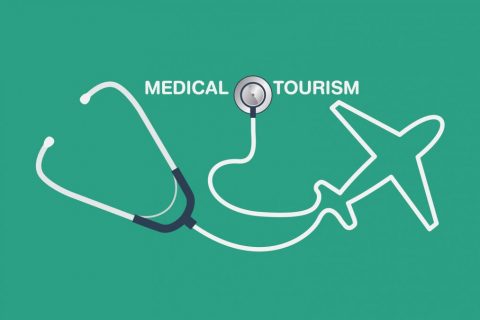
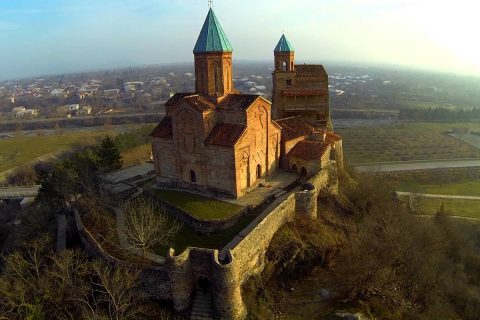
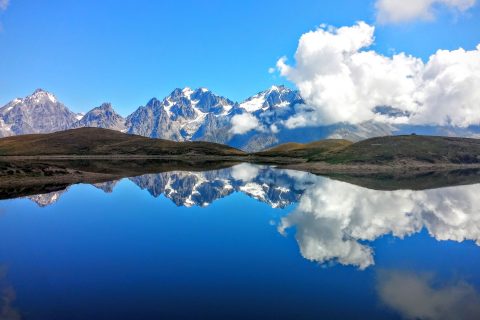
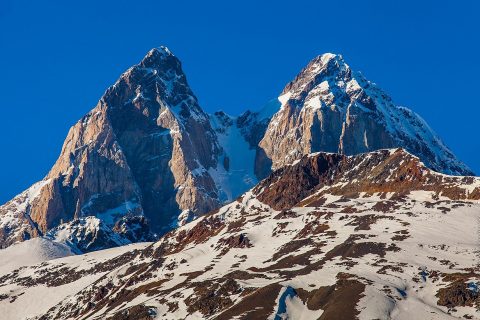
 English
English ქართული
ქართული Русский
Русский